Top 10 Space-Faring Superheroes
Top Ten Cosmic Superheroes
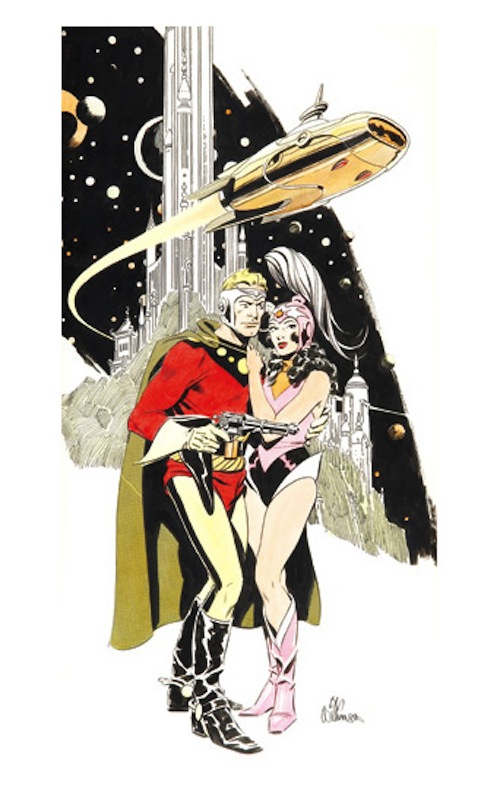
Comics have a rich history in space, from superheroes that were born on alien planets to warriors who harness the power of the stars.
Here are 10 of the best and most compelling examples of comic book characters with cosmic origins, along with some of their iconic adventures.
FIRST STOP: Space Ghost
Nova
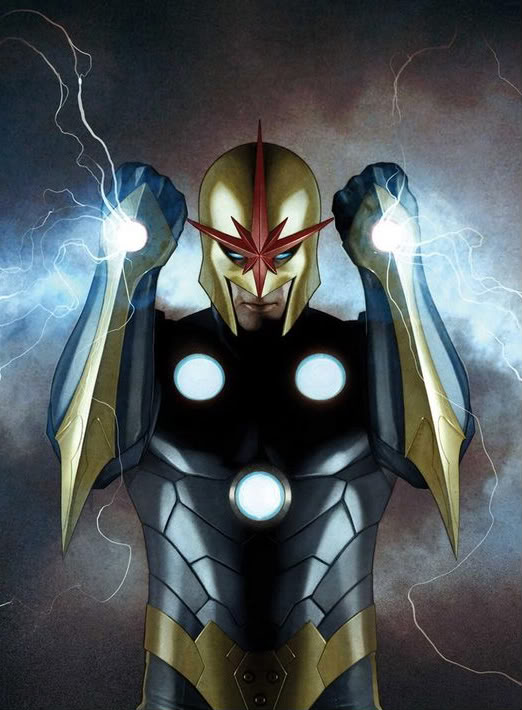
Nova is the space-faring alter ego of one Richard Rider, a young man granted immense power by an alien species, and tasked with protecting the universe as a part of the inter-galactic peace-keeping force, the Nova Corps. If that sounds familiar, you may be thinking of Green Lantern, whose most iconic incarnation has a very similar origin story.
Fortunately, this more cliché characterization of Nova didn't last long. In fact, it wasn't until years later that the character came into his own identity and gained popularity as a part of a team of young superheroes called the New Warriors. After many of the New Warriors died in an encounter with a powerful super villain, Nova saw a revival as a solo character, taking a starring role in Marvel's cosmic oeuvre.
Nova's greatest story is undoubtedly "Annihilation," a cosmic epic in which much of Marvel's space-bound characters united against a threat of unimaginable strength. Nova also had his own title for some time, which spun out of "Annihilation." Recently, Richard Rider, the original Nova, died, and a new Nova, Sam Alexander, took over Rider's powers. Marvel has announced a new series starring Nova, to be produced by top creators Jeph Loeb and Ed McGuiness, as part of the Marvel NOW! Initiative. Nova will also appear on the Marvel NOW! Avengers team.
NEXT: Captain Marvel
The Legion of Super-Heroes
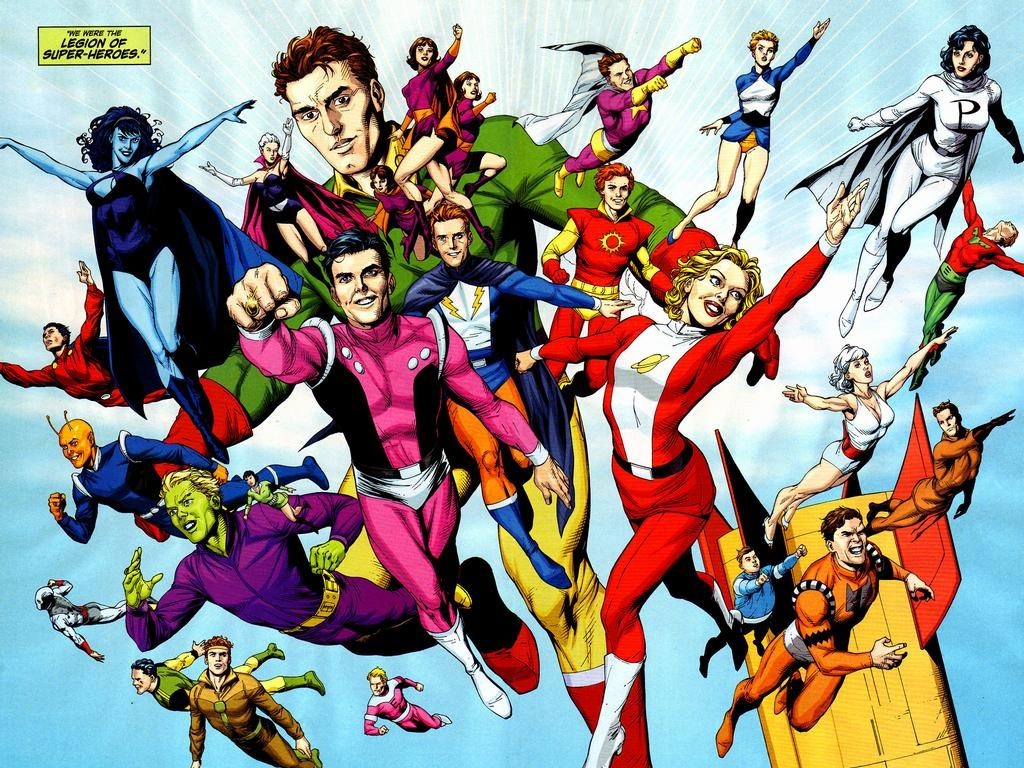
The Legion of Super-Heroes are a vast team of teenage superheroes assembled from various planets, each possessed of unique, often iconic, but sometimes bizarre powers. From Ultra-Boy — who possesses super strength, invulnerability, flight and super speed, but can only use one power at a time — to Matter-Eater Lad — whose physiology allows him to consume almost anything — each of the 20 to 30 active Legionnaires present unique twists on well-known comic archetypes.
While their adventures sometimes tend more toward soap opera than space opera due to their 30th century teenage hormones, the Legionnaires have had their share of action facing a variety of villains and threats as colorful as they are. These range from the Fatal Five, a group of bizarre sci-fi miscreants, to Starfinger, a cosmic crime boss with delusions of grandeur. Still, the true heart of the Legion of Super-Heroes lies within the team's interpersonal dynamics.
One of the most accessible (though occasionally frustrating) aspects of the Legion is that, more than most superhero teams, their stories have been re-launched, re-imagined and rebooted over and over again. Each era holds its own reading gems, starting with the early days, in which Jim Shooter, who later became the editor-in-chief of Marvel Comics, created many of the team's most memorable characters and adventures, while himself still a teenager. Later, Paul Levitz, a former editor-in-chief of DC Comics, alongside artist Keith Giffen, defined a more mature take on the team and crafted one of the group's greatest adventures in "The Great Darkness Saga." In this story, the Legion takes on Jack Kirby's creation Darkseid, an evil god of immense power. [Pros Choose: The Top Ten Legion of Super-Heroes Stories]
Also of note are the early issues of Mark Waid's take on the Legion of Super-Heroes, which presented a team based around a common sense of youthful rebellion, turning many of the group's classic concepts on their heads, and taking the heroes to sometimes even stranger places.
NEXT: Nova
Space Ghost
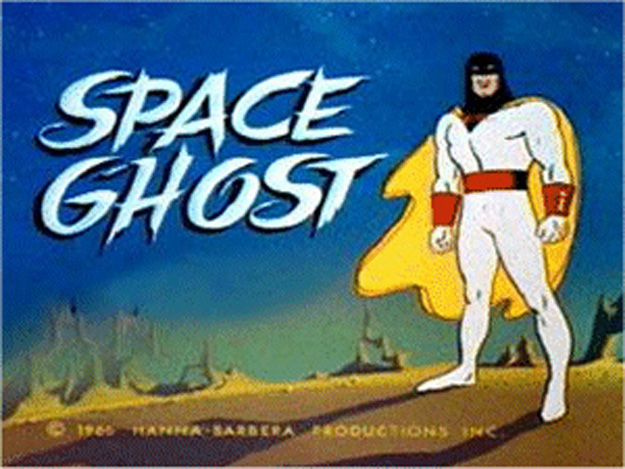
Designed by legendary animator and comic artist Alex Toth for Hanna-Barbera in the 1960s, Space Ghost is known primarily for his animated adventures, but he also has an indelible connection to comics.
Space Ghost is a space-bound superhero who dwells on his own Ghost Planet, traversing the stars armed with his gauntlets, which produce strange energy beams with a variety of effects. Alongside his sidekicks Jan and Jace, and their pet monkey, Gleek, Space Ghost faces off against cosmic monsters such as the insectoid Zorak, the feline twins Brak and Sisto, and the robotic Metallus.
Many fans will know Space Ghost from his latter-day reinvention in Cartoon Network's parody talk show, "Space Ghost Coast to Coast," but the original 64 episodes of his Hanna-Barbera series are unbeatable among sci-fi action cartoons. In comics, his early appearances are hard to find, but echo the fun, exciting tone of his TV series. In more modern comics, Toth-devotee Steve Rude drew a single issue from Comico. It presents a slightly more mature take on the character, as does a DC Comics series from 2005, which featured art from legendary comic painter Alex Ross.
NEXT: Legion of Super-Heroes
Captain Marvel
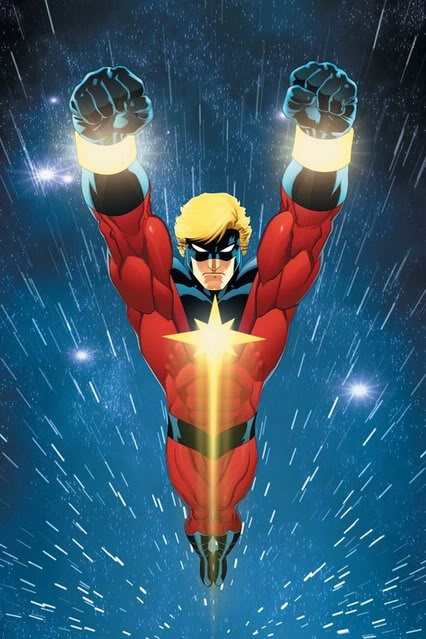
While the original Captain Marvel was a Superman-type character published by Fawcett Comics in the 1940s, when that character's trademark lapsed, the young Marvel Comics snatched up the rights to the name. They created an alien warrior named Mar-Vell, whose adventures eventually brought him to Earth, and into the path of the Avengers.
Gifted with a pair of energy-wielding "Nega-Bands" and "Cosmic Awareness," the power to perceive all universes and realities, Mar-Vell found himself voyaging through strange worlds in an iconic example of the “way-out” superhero space stories taking place at Marvel Comics in the '70s. Though Mar-Vell died in the early 1980s, his name and legacy are still important throughout the Marvel mythos.
Recently, Carol Danvers, an energy-powered superhero who gained her abilities through her association with Mar-Vell, took on the mantle of Captain Marvel, and currently stars in her own series produced by Kelly Sue DeConnick and Dexter Soy, while also serving as a member of the Avengers.
For stories featuring Mar-Vell, the Avengers tale "The Kree-Skrull War" is as good as it gets. Another excellent read is "The Death of Captain Marvel," a graphic novel by Jim Starlin, whose cosmic characters shaped an entire era of Marvel Comics' stellar stories. Also of note is Peter David's "Captain Marvel," which featured Genis-Vell, the son of Mar-Vell who followed in his father's footsteps.
NEXT: The New Gods
The New Gods
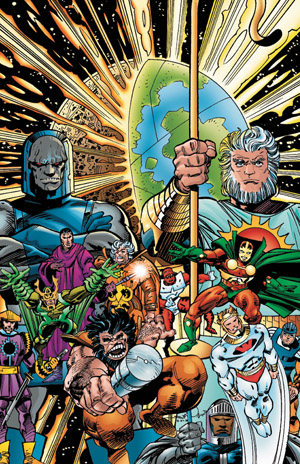
Jack Kirby is, almost inarguably, the 20th century's greatest comic creator and illustrator. His visual language and energy redefined the way comics were and are perceived. While he is best known for his work at Marvel Comics — where he created, or co-created with Stan Lee , almost all of Marvel's most-beloved characters — one of his greatest creations took place at DC Comics. There, he birthed the New Gods, a race of beings whose far-flung adventures were the product of Kirby's effort to re-interpret and modernize many of mythology's most classic archetypes. [Jack Kirby's Most Fantastic & Uncanny Marvel Creations]
The story of the New Gods features a host of deities, both benevolent and evil, who inhabit the twin worlds of New Genesis and Apokolips. It takes place over a series of stories known as "The Fourth World," and centers on beings like Darkseid, the supreme overlord of Apokolips, whose quest for the "Anti-Life Equation" brings him, indelibly, into conflict with a host of other characters. One of these is his own son, Orion, who was raised by Darkseid's greatest enemy, Highfather of New Genesis. Another is Mr. Miracle, the son of Highfather, who was raised on Apokolips only to escape its dark confines and become the universe's greatest escape artist.
The colorful, bizarre and ingenious characters and concepts that Kirby created to fuel his alien myth cycle are too numerous to list. However, for their greatest adventures, one needs look no further than Kirby's own material, which has recently been collected as a series of "Fourth World Omnibus" books. The series even includes Kirby's work on "Superman's Pal Jimmy Olsen," a story that was used as a bridge between the New Gods and the DC Universe at large.
NEXT: Thanos
Thanos
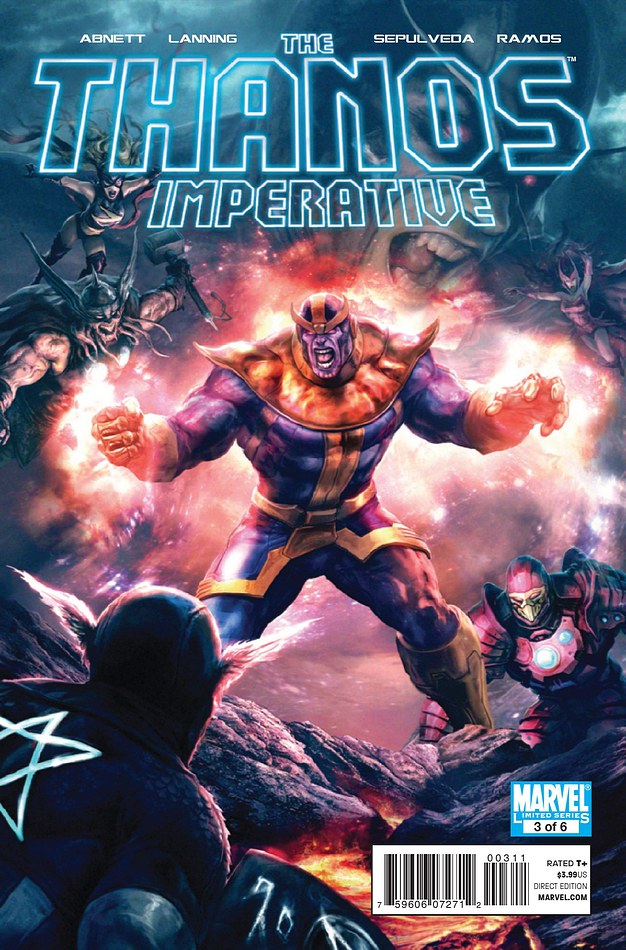
Though he's technically not a hero, at least no more than any villain is the hero of his own story, Thanos is one of Marvel's greatest and most compelling cosmic characters. Born on Titan, the Saturn's moon, Thanos was a powerful warrior who became obsessed with the concept of Death, and her physical embodiment.
In his quest to impress Death, Thanos embarked on various conquests, the most ambitious of which was the collection of the Infinity Gems, small jewels that held the power of the metaphysical forces of the universe. With the gems, and their absolute power, in hand, Thanos wiped out half of all life in the universe. It took a veritable army of Marvel's most powerful heroes to take Thanos down, and still he has returned, time and time again, to attempt his conquest of the universe.
There is no Thanos story more iconic than Jim Starlin, George Perez and Ron Lim's "Infinity Gauntlet." However, "The Thanos Imperative," which grew out of "Annihilation," and featured the death of Nova as he fought alongside a team of cosmic heroes called the Guardians of the Galaxy, is also well worth a read. Sharp-eyed moviegoers will also recognize Thanos from his brief cameo at the end of last summer's Avengers film. This set the stage for his probable appearance in Avengers 2, or a recently announced film featuring a version of the aforementioned Guardians of the Galaxy.
NEXT: Flash Gordon
Flash Gordon

While Alex Raymond createdFlash Gordonto compete with Buck Rogers, another futuristic space hero, Flash's adventures took him farther, and to stranger places. The Earthling was transported to an alien world struggling against the rule of a powerful despot. Following an archetype influenced heavily by Edgar Rice Burroughs' John Carter of Mars, Flash became a hero to the world of Mongo, fighting alongside characters like Prince Vultan of the Hawkmen and Prince Barin, the displaced ruler of Mongo, to overthrow the terrifying Ming the Merciless.
Flash Gordon influenced a generation of science fiction, inspiring creators and characters galore. He also starred in a series of dynamite film serials, and, while it's camp can't be denied, the Flash Gordon film starring Sam Jones is great fun, and a fitting tribute to Alex Raymond's original strips. Latter-day takes on Flash Gordon have been less successful, including a SyFy Channel series that aimed to update the character, but failed to capture his charm.
When it comes to his print appearances, the best material is undoubtedly Alex Raymond's original comic strip, which has been reprinted enough times that it's easy to find, followed closely by Al Williamson's 1960s comics.
NEXT: Green Lantern
Green Lantern
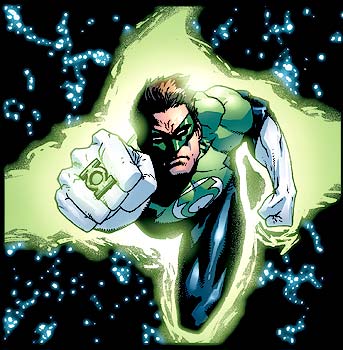
Though many characters have held the title of "Green Lantern,” none is as iconic as Hal Jordan, a test pilot who found a dying alien in the wreckage of a crashed spaceship. The alien, Abin Sur, was a member of the Green Lantern Corps, an intergalactic police force that wielded strange power rings. In his dying moments, Abin Sur passed his ring on to Hal Jordan, drafting him into the Corps, and granting him the power to create anything his mind could envision, so long as he remains totally honest and completely fearless.
Many readers may recognize the concept of the Green Lantern from the ill-fated film starring Ryan Reynolds as Hal Jordan, but that movie failed to capture the essence of what makes Green Lantern great. A sense of wonder and adventure accompanies Hal Jordan on his travels through alien worlds and the deepest reaches of space, along with a sense of awe at his accomplishments, all of which are limited solely by his incredible force of will.
Hal Jordan has had many ups and downs as a character, even, at one time, betraying the Green Lantern Corps, and eventually giving his life in a redemptive act. As often happens in comics, he eventually returned to life in Geoff Johns' landmark mini-series "Green Lantern: Rebirth." This story refocused the character and set him on a path that he still follows in current stories. Johns still writes the continuing adventures of Hal Jordan, though the highlight of his run is undoubtedly "The Sinestro Corps War," wherein Green Lantern's greatest foe mounts an army possessing the power of fear itself.
NEXT: The Silver Surfer
Silver Surfer
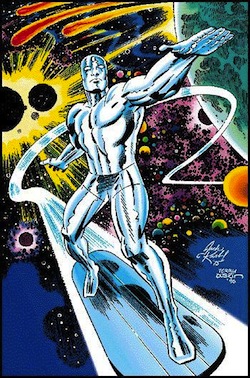
Often called "The Sentinel of the Spaceways," the Silver Surfer is one of Jack Kirby's later creations at Marvel Comics. The Surfer's first appearance as a secondary character in a Fantastic Four story so ignited the imagination of writer Stan Lee that the hero immediately grew into a character with a mythology and a philosophy all his own, one of the constant struggle between responsibility and morality in a universe where evil is often more necessary than good.
The Surfer was originally Norrin Radd, an astronomer from the planet Zenn-La. When Radd discovered that the cosmic entity known as Galactus had come to devour Zenn-La's very life force, Radd struck a deal with the primal being to seek out uninhabited planets that Galactus could consume. Eventually, Galactus became aware of Earth, and set out to make it his next meal. The Surfer arrived just in time to warn the Fantastic Four of Galactus' arrival, sparking a long history of camaraderie between the Surfer and the FF.
The Silver Surfer's adventures often center on philosophical conundrums as much as physical challenges, and writer Stan Lee has frequently used the Surfer as a vessel to express some of the writer's own metaphysical worldviews. Few stories showcase what the Surfer is all about better than his original appearances in Fantastic Four #48-50, and his subsequent solo series by Lee and John Buscema. Also of note is the Silver Surfer graphic novel, created by Lee and Kirby, which reunited the team that invented the character for one of the Surfer's greatest tales.
NEXT: Man of Steel
Superman
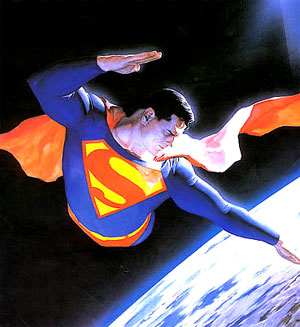
It's true that most of Superman’s adventures see him defending his home city of Metropolis, but Superman often finds himself exploring the far-flung reaches of other galaxies as well. Stories frequently find the superhero in locations ranging from the region of space where his birth planet, Krypton, once orbited (in the Corvus constellation, near red dwarf LHS 2520, according to Neil Degrasse Tyson), to planets like New Genesis or Apokolips, the twin homes of the New Gods — and to even stranger locations. [Deaths, Rebirths, Reboots: 10 Biggest SUPERMAN Changes]
Not much needs to be said about why Superman is an incredible character. As the first superhero ever created, he paved the way for all others, including numerous copycats, and has inspired countless millions of fans all over the world. While his origins on the planet Krypton were not revealed until several years into his nearly 80-year existence, Superman embodies the archetype of the man who fell to Earth, a being of incredible power and purity who comes to our world to show us our own potential.
Over the years, Superman has served as a bridge to bring other disparate characters into the fold of the DC Universe, including the Legion of Super-Heroes, who brought him into the future in his younger guise of Superboy, and the New Gods, whose adventures spread into the pages of "Superman's Pal Jimmy Olsen." The stories in which Superman appears with those characters are classics. Probably the best Superman story, the one that encapsulates everything great about the Man of Steel, while also sending him to numerous, increasingly strange worlds, is Grant Morrison and Frank Quitely's "All-Star Superman." For a treatise on all that a man from the stars can mean to the planet Earth, one need look no further.
Join our Space Forums to keep talking space on the latest missions, night sky and more! And if you have a news tip, correction or comment, let us know at: community@space.com.
Get the Space.com Newsletter
Breaking space news, the latest updates on rocket launches, skywatching events and more!
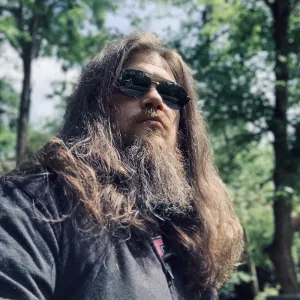
George Marston is Newsarama's resident Marvel Comics expert and general comic book historian since 2011. George has also been the on-site reporter at most major comic conventions such as Comic-Con International: San Diego, New York Comic Con, and C2E2. Outside of comic journalism, I am the artist of many weird pictures, and the guitarist of many heavy riffs. (They/Them)
